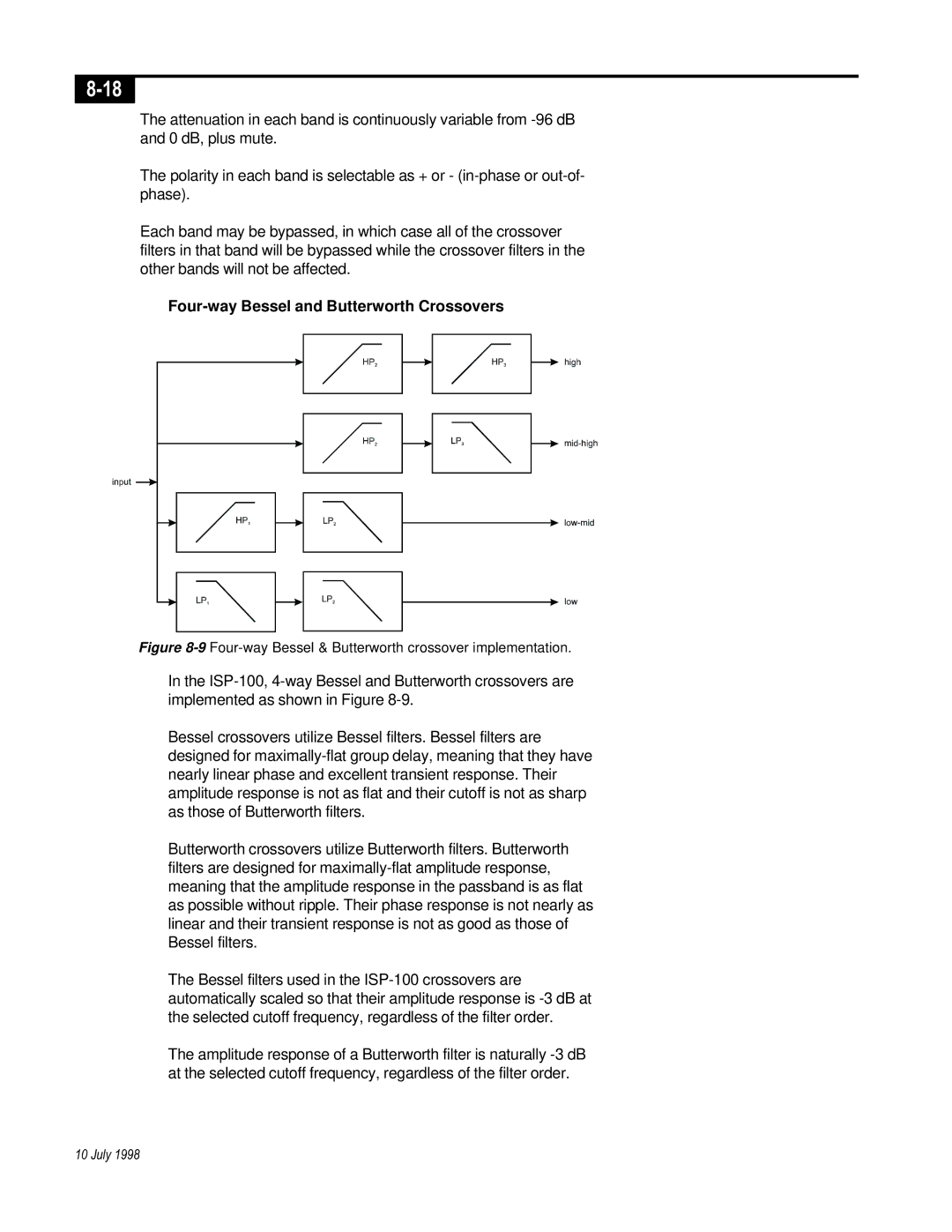
The attenuation in each band is continuously variable from
The polarity in each band is selectable as + or -
Each band may be bypassed, in which case all of the crossover filters in that band will be bypassed while the crossover filters in the other bands will not be affected.
Four-way Bessel and Butterworth Crossovers
Figure 8-9 Four-way Bessel & Butterworth crossover implementation.
In the
Bessel crossovers utilize Bessel filters. Bessel filters are designed for
Butterworth crossovers utilize Butterworth filters. Butterworth filters are designed for
The Bessel filters used in the
The amplitude response of a Butterworth filter is naturally
